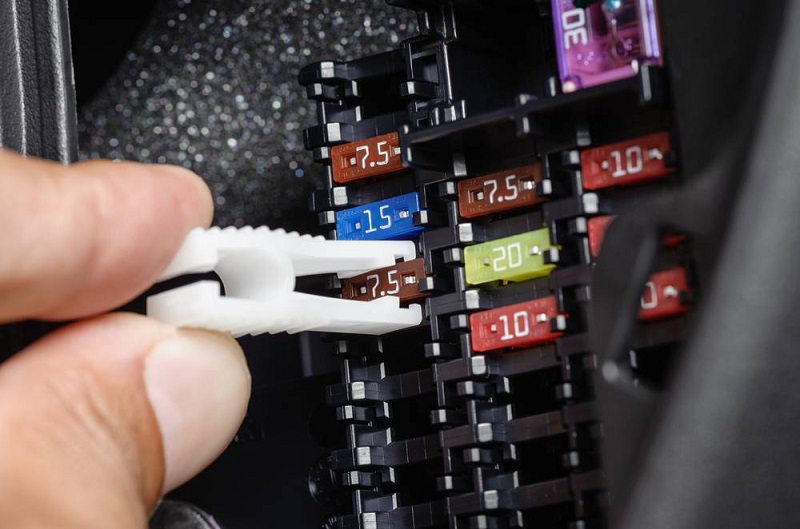If you’re tired of spending a fortune on car repairs, why not learn how to fix things yourself? With just a little bit of knowledge and some elbow grease, you can save hundreds or even thousands of dollars in repair bills. Plus, knowing how to do basic car repairs can come in handy during an emergency. So whether you’re a beginner or an experienced DIYer, here are 10 basic car repairs you should know.
Changing a Flat Tire
One of the most common car problems is getting a flat tire. Knowing how to change it yourself can save you time and money. Start by finding a safe spot to park and turn on your emergency flashers. Then, use your car jack to lift the vehicle off the ground and remove the flat tire. Replace it with the spare and tighten the lug nuts in a star pattern.
Replacing Wiper Blades
If your wipers are leaving streaks or making noise, it’s time to replace them. Start by lifting the wiper arm away from the windshield and pressing down on the small tab where it meets the blade. Slide the old blade off and replace it with the new one. Be sure to test the wipers before hitting the road.
Changing Oil and Oil Filter
Regularly changing your car’s oil is essential for keeping your engine running smoothly. To do this yourself, start by draining the old oil using a drain pan. Then, remove the old oil filter and replace it with a new one. Finally, refill the engine with new oil and check the level using the dipstick.
Replacing Spark Plugs
Spark plugs play a crucial role in starting your car’s engine. Over time, they can wear out and need to be replaced. Start by locating the spark plug wires and removing them from the old spark plugs. Use a spark plug socket to remove the old plugs and replace them with new ones. Finally, reconnect the spark plug wires.
Changing Air Filter
A dirty air filter can decrease your car’s performance and fuel efficiency over time. To change it yourself, locate the air filter housing under the hood of your car. Open it and remove the old filter. Replace it with a new one and close the housing back up.
Replacing Headlights and Taillights
Having a dead headlight or taillight is not only dangerous but can also result in a ticket. To replace them yourself, start by locating the light bulb holder behind the headlight or taillight. Twist it counterclockwise to remove it and pull out the old bulb. Replace it with a new one and twist the holder back into place.
Changing Brake Pads
Brake pads wear out over time and need to be replaced for safe driving. To do this yourself, start by removing the wheel and loosening the brake caliper bolts. Slide out the old brake pads and replace them with new ones. Then, push in the piston using a C-clamp before tightening everything back up.
Fixing a Dead Battery
A dead battery can leave you stranded, but it’s a quick fix. Start by locating the battery and disconnecting the negative cable first, followed by the positive cable. Remove the old battery and replace it with a new one. Then, reconnect the cables in reverse order.
Replacing Fuses
If certain electrical components of your car stop working, it may be a blown fuse. To fix this yourself, locate the fuse box and use the diagram to find the blown fuse. Remove it and replace it with a new one of the same amperage.
Replacing Serpentine Belt
The serpentine belt is responsible for powering several important components in your car. Over time, it can wear out and need to be replaced. To do this yourself, locate the belt and loosen the tension using a wrench. Remove the old belt and replace it with a new one, making sure it follows the same path as the old one.
Frequently Asked Questions
Q: Can I fix my car even if I have no experience?
A: Yes, with some basic knowledge and following proper instructions, you can fix many common car problems yourself.
Q: Do I need special tools to do these repairs?
A: Some basic tools like a jack, socket set, and screwdriver may be necessary for certain repairs, but they are usually affordable and can be found at any auto parts store.
Q: How often should I check my car’s oil?
A: It is recommended to check your car’s oil level every month and change it every 3,000 miles or as per your vehicle’s manufacturer guidelines.
Q: Is it safe to fix my own car?
A: As long as you follow proper safety precautions and have the necessary knowledge and tools, DIY car repairs can be a safe option.
Q: Are there any repairs I should not attempt on my own?
A: It’s always best to leave complex and potentially dangerous repairs, such as those involving the engine or transmission, to a professional mechanic. Always prioritize your safety first.
Conclusion
Learning how to do basic car repairs can save you time, money, and hassle in the long run. It’s also a valuable skill to have in case of an emergency. Whether you’re a beginner or already have some experience with DIY car repairs, these 10 basic repairs are essential to know.
Just remember to always prioritize your safety and seek professional help when necessary. So, why not roll up your sleeves and become a DIY car repair expert today? Happy fixing! Now go ahead and hit the road with confidence knowing you can handle these common car problems yourself.






